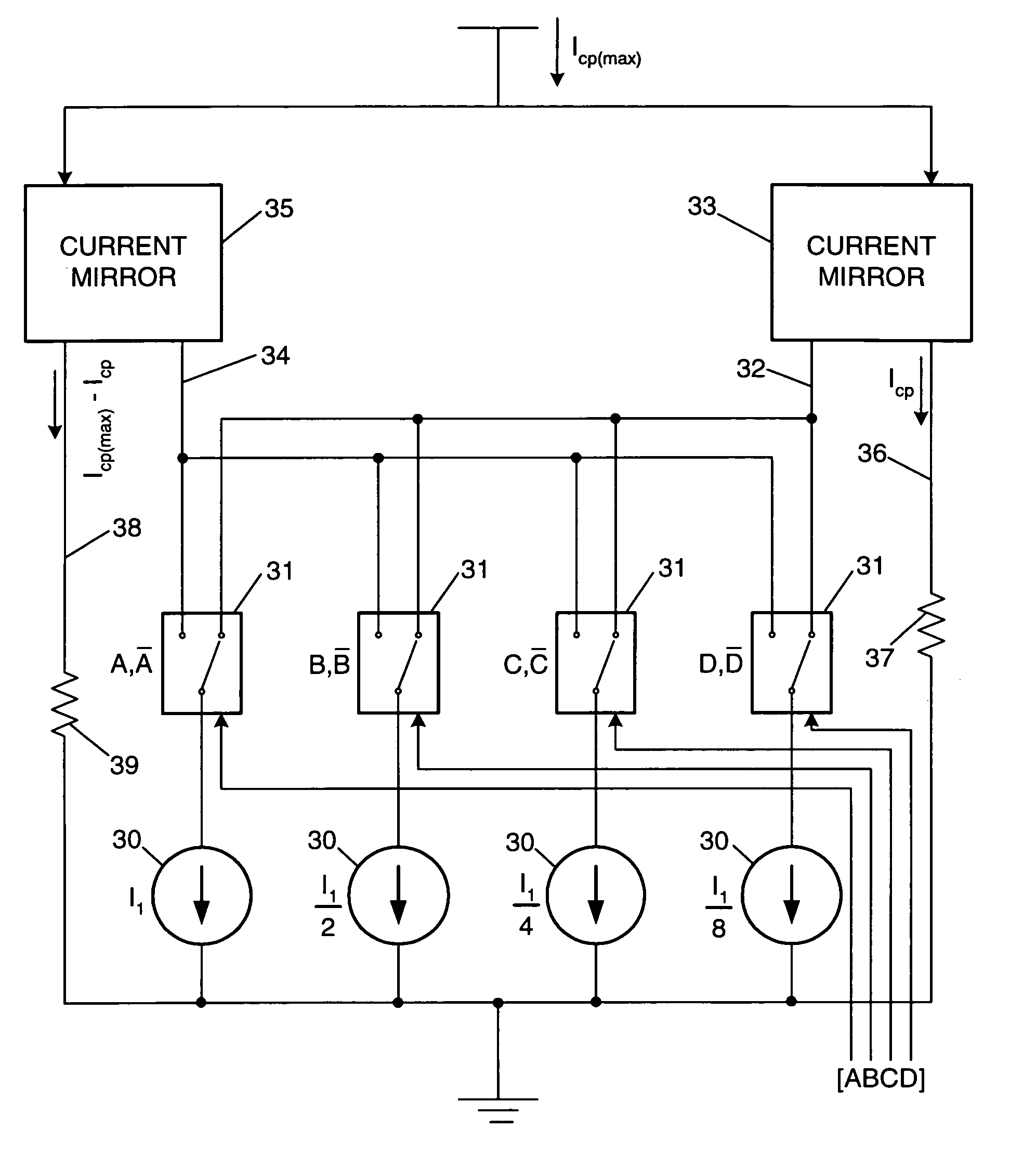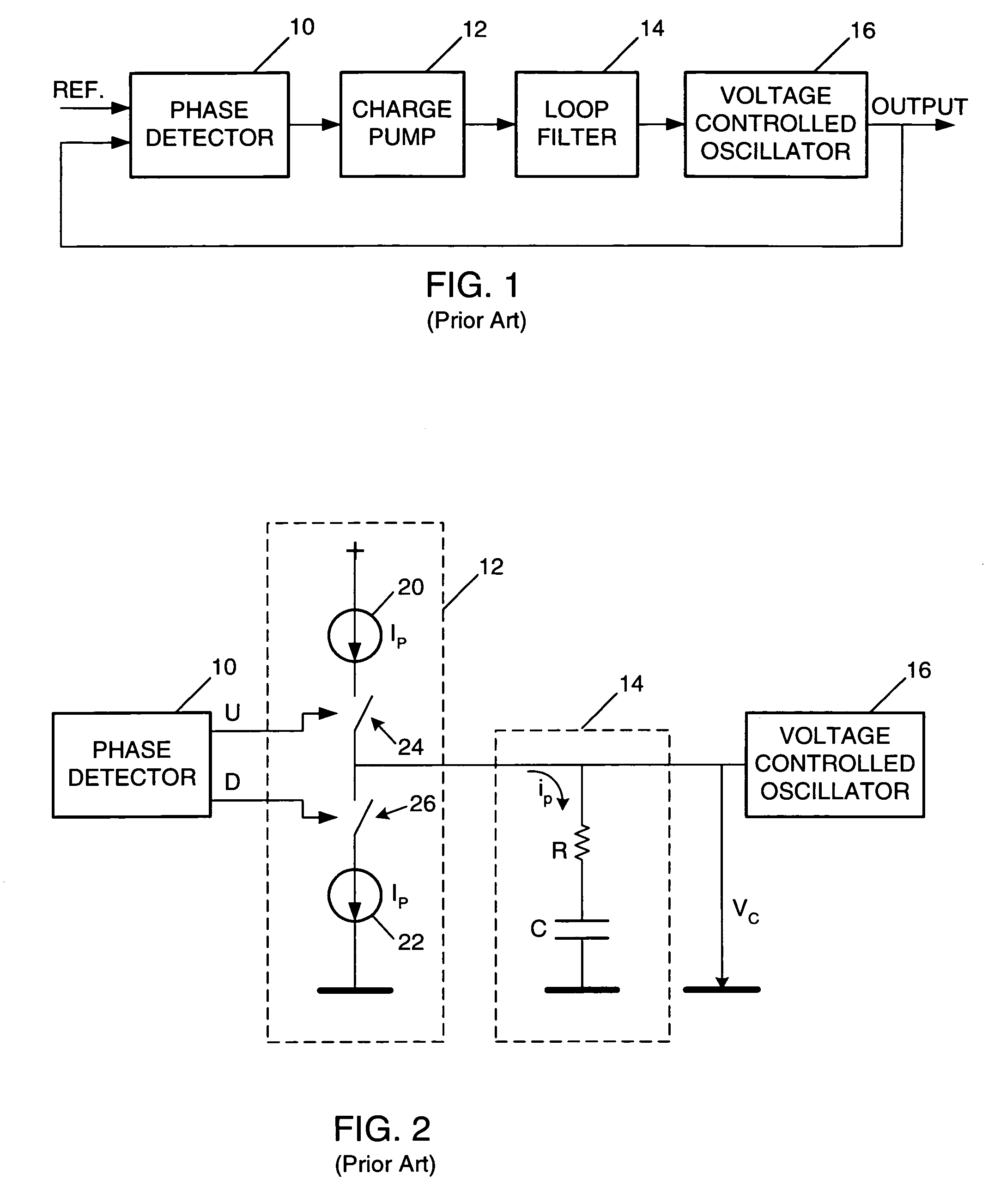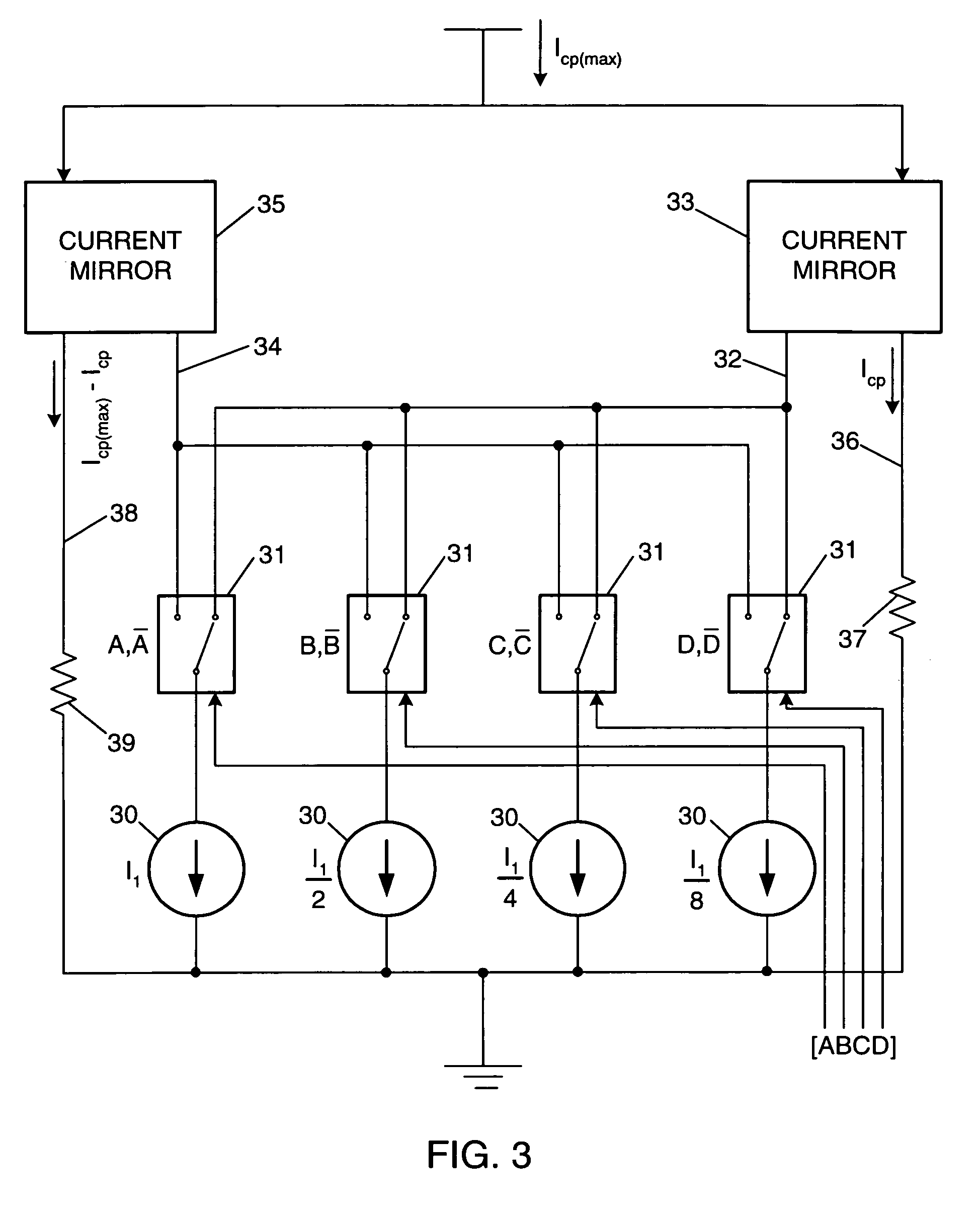Charge pump bias network
a charge pump and bias network technology, applied in electronic switching, pulse automatic control, pulse technique, etc., can solve problems such as adversely affecting other sensitive components of the pll, and achieve the effect of minimizing current switching effects and eliminating noise effects
- Summary
- Abstract
- Description
- Claims
- Application Information
AI Technical Summary
Benefits of technology
Problems solved by technology
Method used
Image
Examples
Embodiment Construction
[0014]As shown in the drawings for purposes of illustration, the present invention is concerned with charge pump circuits as used in phase-locked loops (PLLs). FIG. 1 shows the basic components of a PLL, including a phase detector 10, a charge pump 12, a loop filter 14 and a voltage-controlled oscillator (VCO) 16. The VCO 16 generates an output signal at a desired frequency and also feeds back this signal to the phase detector 10. If, for example, the phase of the oscillator output signal falls behind the phase of a reference signal applied to the phase detector 10, the phase detector causes the charge pump to increase its output, which is used to control the VCO to speed up the output signal. Similarly, if the output signal from the VCO 16 leads the phase of the reference signal, the phase detector 10 causes the charge pump circuit 12 to slow the VCO 16. The loop filter 14 is basically a low-pass filter that smoothes out the abrupt control signals from the charge pump 12. This feed...
PUM
 Login to View More
Login to View More Abstract
Description
Claims
Application Information
 Login to View More
Login to View More - R&D
- Intellectual Property
- Life Sciences
- Materials
- Tech Scout
- Unparalleled Data Quality
- Higher Quality Content
- 60% Fewer Hallucinations
Browse by: Latest US Patents, China's latest patents, Technical Efficacy Thesaurus, Application Domain, Technology Topic, Popular Technical Reports.
© 2025 PatSnap. All rights reserved.Legal|Privacy policy|Modern Slavery Act Transparency Statement|Sitemap|About US| Contact US: help@patsnap.com



